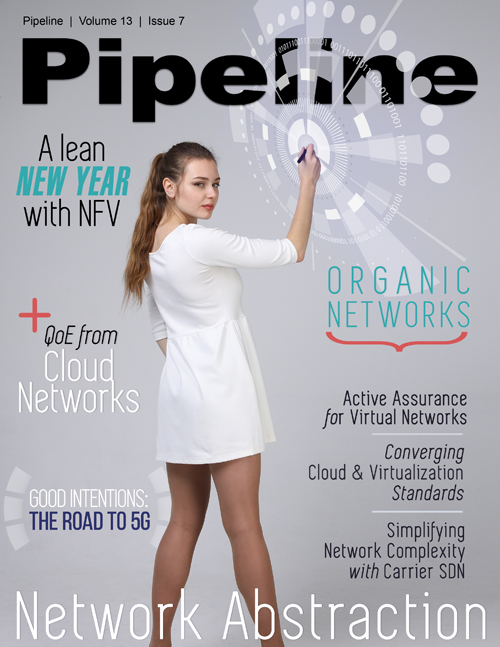Organic Networks: self-managing and self-growing networks
We've talked a lot about autonomic networks, but vendors have not built anything beyond real time demonstrations, and the industry has not actually bought these products. However, as an industry, we have inserted a lot of simple proto-autonomic behavior into elements in our networks. Routers handshake, nodes report errors and anomalous behavior, elements identify themselves to network management tools, and those tools diagnose problems, all without much human intervention. The use of pattern recognition analytics from huge data sets is improving all the time, making it possible to predict network behavior and identify anomalies in ways that humans just can’t do. Data scientists use this data to find useful correlations that drive greater reliability, increase efficiency, and create more customer satisfaction. So the industry is definitely making progress towards building networks that have many of the attributes of “intelligence”. But the path to fully autonomous, self-managing networks is not yet mapped in any detail.
What we can do now
One realistic path is opening up. It will involve another systematic revolution in OSS. Just like with the introduction of NGOSS/Frameworx, a stepwise path exists to achieve this revolutionary change. Again, like NGOSS, it will come by applying a novel overall vision to the rudiments of new tools that are naturally bubbling up in our inventive industry. The principle new seeds are: SDN/NFV unbundling, openAPIs, big data, social network link models, cloud infrastructure, IoT, machine learning, accessible intelligent agents with available open APIs, a marketplace for innovation with apps, intelligent edge-based security appliances, and a vast ICT network that links endpoints to cloud computing enters. For the last decade, we called this evolving new vision Autonomic Networks.
Future networks will contain autonomic elements, along with a collection of SDN-like control nodes. Michael Beringer explains that autonomic networking and SDN are complementary concepts. Networks will certainly contain ever more virtualized elements and functions: SDN and NFV being early manifestations of this. The first vendors are already beginning to piece these parts together. MYCOM OSI is linking big data and analytics into a manager of manager model, where the heritage OSS systems both feed data and act as the hands of the MYCOM OSI automation. It also reaches out directly to NFV devices. Elsewhere, gen-E is using social network models for the assessment and presentation of big data analytics to organize consoles and reporting more in line with naturalistic, human reasoning. But these are still piecemeal, somewhat blind, steps.
Briefly, the forthcoming near-term future architecture will be NFV enabled network devices controlled by software-defined networks. Sensors in the network, environment, and customer devices will track network performance and customer behavior — concurrently feeding both nonSQL data stores and intelligent model-driven controllers. Machine learning systems will continuously tap the deep data stores and train the model used by these intelligent controllers. The intelligent controller will reach down to the NFV enabled devices and optimize the network in conjunction with provisioning resources, security, and interconnects in virtualized data centers — placing services into these provisioned resources based on real-time consumer demand.
At first there will be many different and specialized intelligent controllers. They will intercommunicate with openAPIs such as those in development by the TMForum. Each will be an expert in its own domain. In the beginning, these domains will be function based. But we should evolve out of our function-based architectures. Eventually the natural clustering of the data itself will segment the domains of specialization. For example, some might specialize in specific device families and others in consumer service clusters.
We will remain in this distributed controller intelligence world — but with ever greater degrees of integration and coordination. For example, security controllers will start by just focusing on identifying the patterns they associate with abnormal behavior and acting to damp that down. But, over time, these will interlink with network optimization controllers to insure that the actions taken for security are consistent with maintaining overall network stability and service continuity. As these security controllers look for any departure from normal network and service behavior, this discovered information can also feed controlled, adaptive provisioning of network and cloud infrastructure.



















